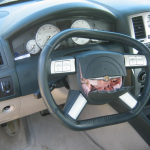I received another email from a person asking: “What are basic first aid measures for a serious allergic reaction if there is no epi pen available? I watched your training video in your library at ProFirstAid.com but I can’t seem to find an answer.”
Thanks for your answer,
C
Thanks for the question C. I thought this was a good question and a situation which no one wants to find themselves. So I decided to reply back and include it into the RoyOnRescue.com blog response. I hope it helps.
Here’s my reply:
Dear C,
Other than immediately calling EMS/911, if at all possible, let the person rest in position of comfort.
Some of the things that are indicated for first aid providers are:
1. Watch for signs and symptoms of severe allergic reactions like difficulty breathing, itching, hives, swelling, sore throat, anxiety.
2. Remove victim from anything that would aggravate or worsen the symptoms.
3. Give supportive care like rescue breathing, CPR, shock treatment etc when indicated.
4. If at all possible, identify what it is that gave the person their serious allergic reaction and avoid any further exposure to it.
This is not a prescription but simply something that I would do. I always like to have liquid diphenhydramine(Benadryl like antihistimine) on hand that can be taken as prescribed on the container or per doctors order. If I did not have a prescription for a “rescue inhaler” like albuterol or didn’t have an allergy response kit prescribed and filled from my doctor I would really emphasize doing so, and then keeping it up to date as the epi pen and other medications could expire and be useless.
Remember, recognizing the early signs of an allergic reaction and activating EMS/911 as soon as possible is critical. Time is of the essence. Oh! And if you think you may have an allergy, or have ever had a severe allergic reaction, you should be sure to contact your medical professional and get a filled prescription for an emergency allergic reaction kit, AKA: bee sting kit.
I hope this helps, and best wishes.
Roy

Liquid Antihistimine Benadryl




